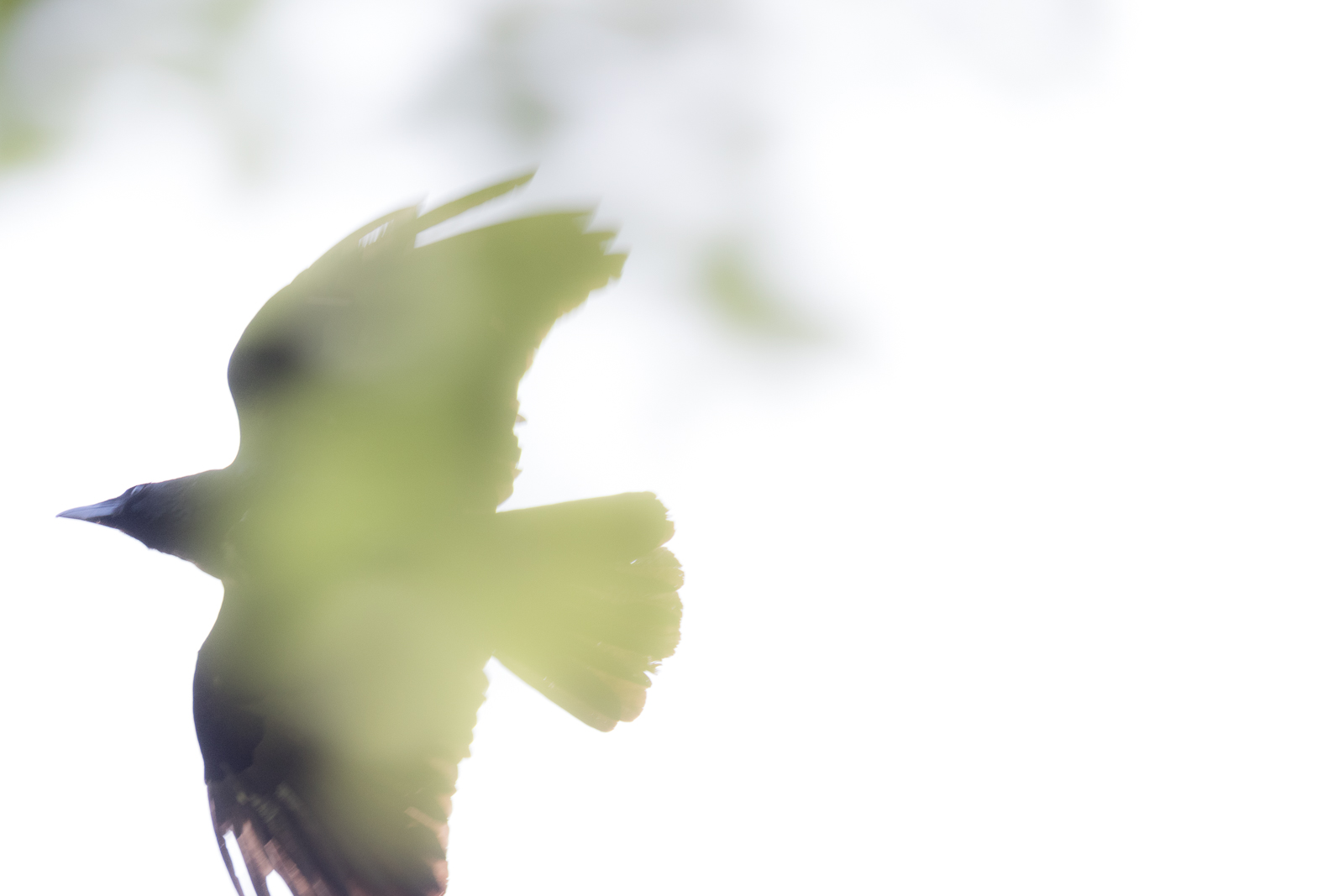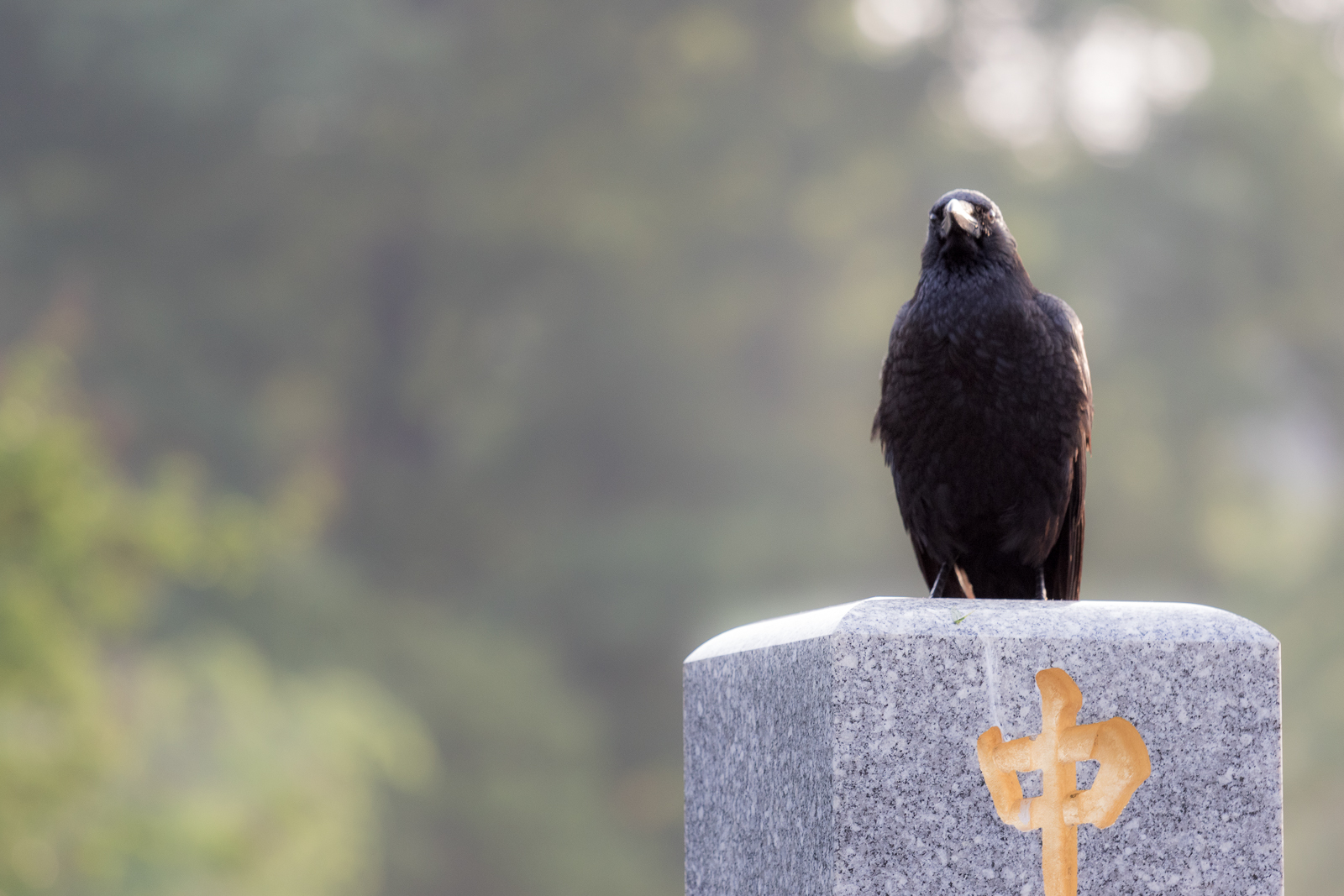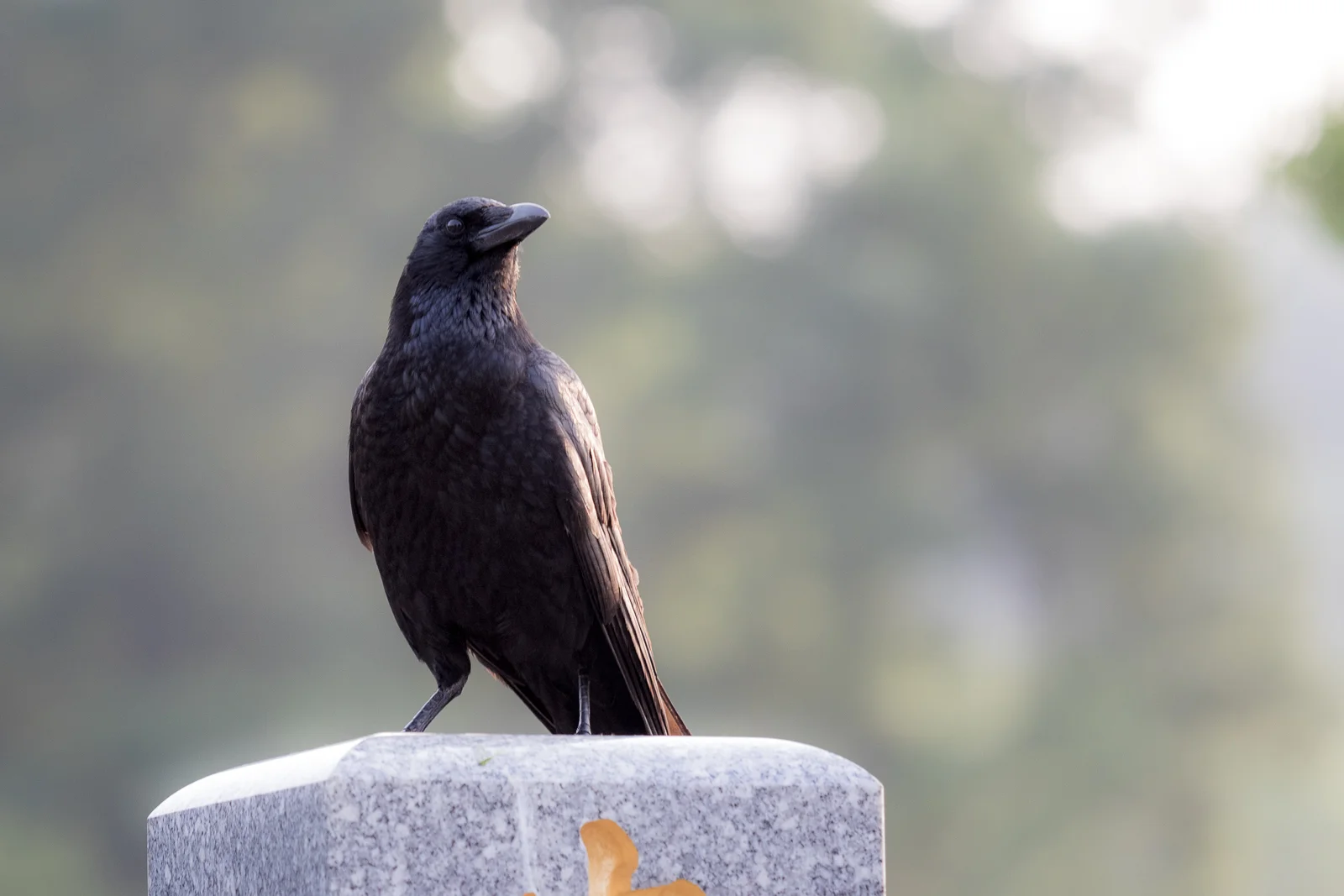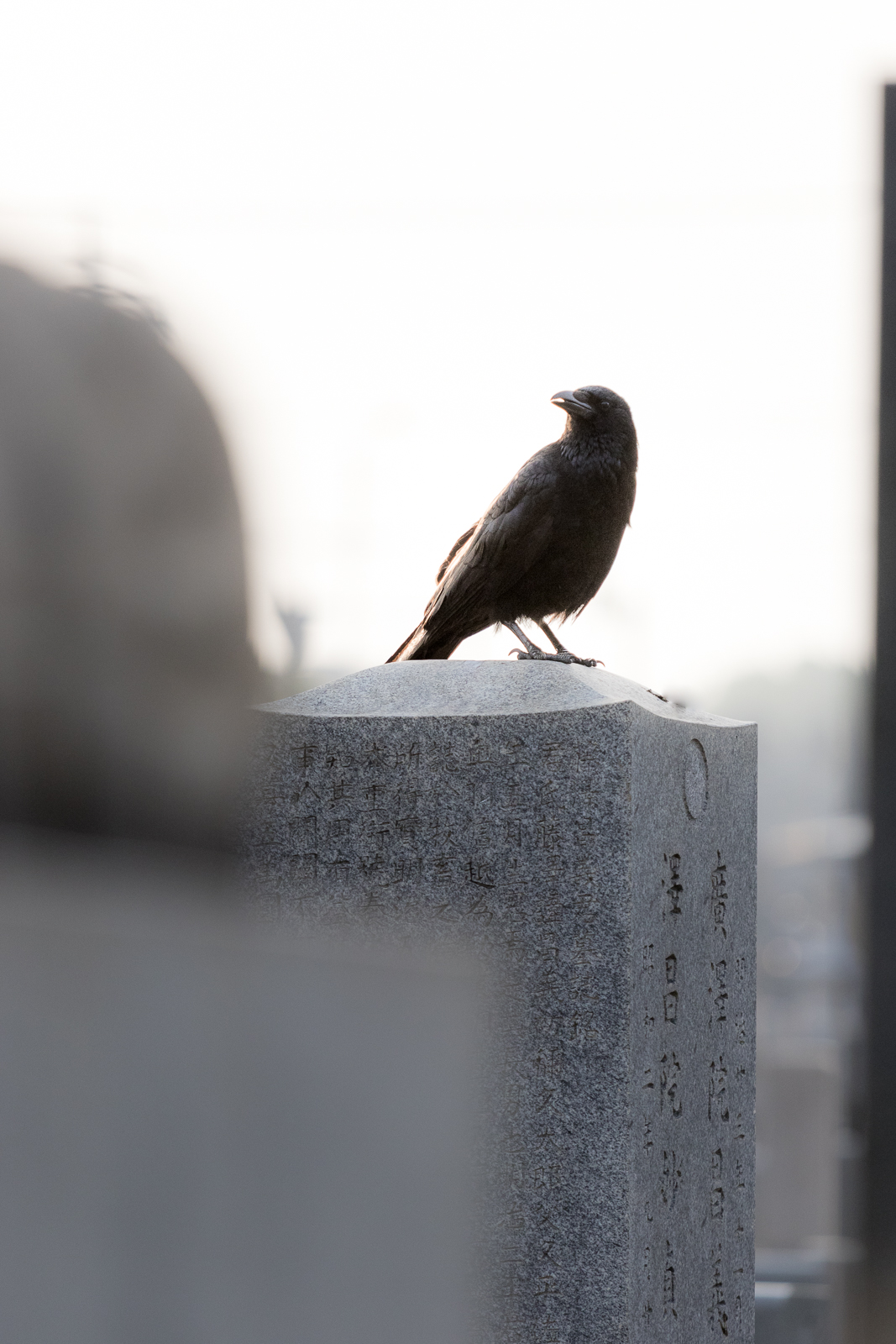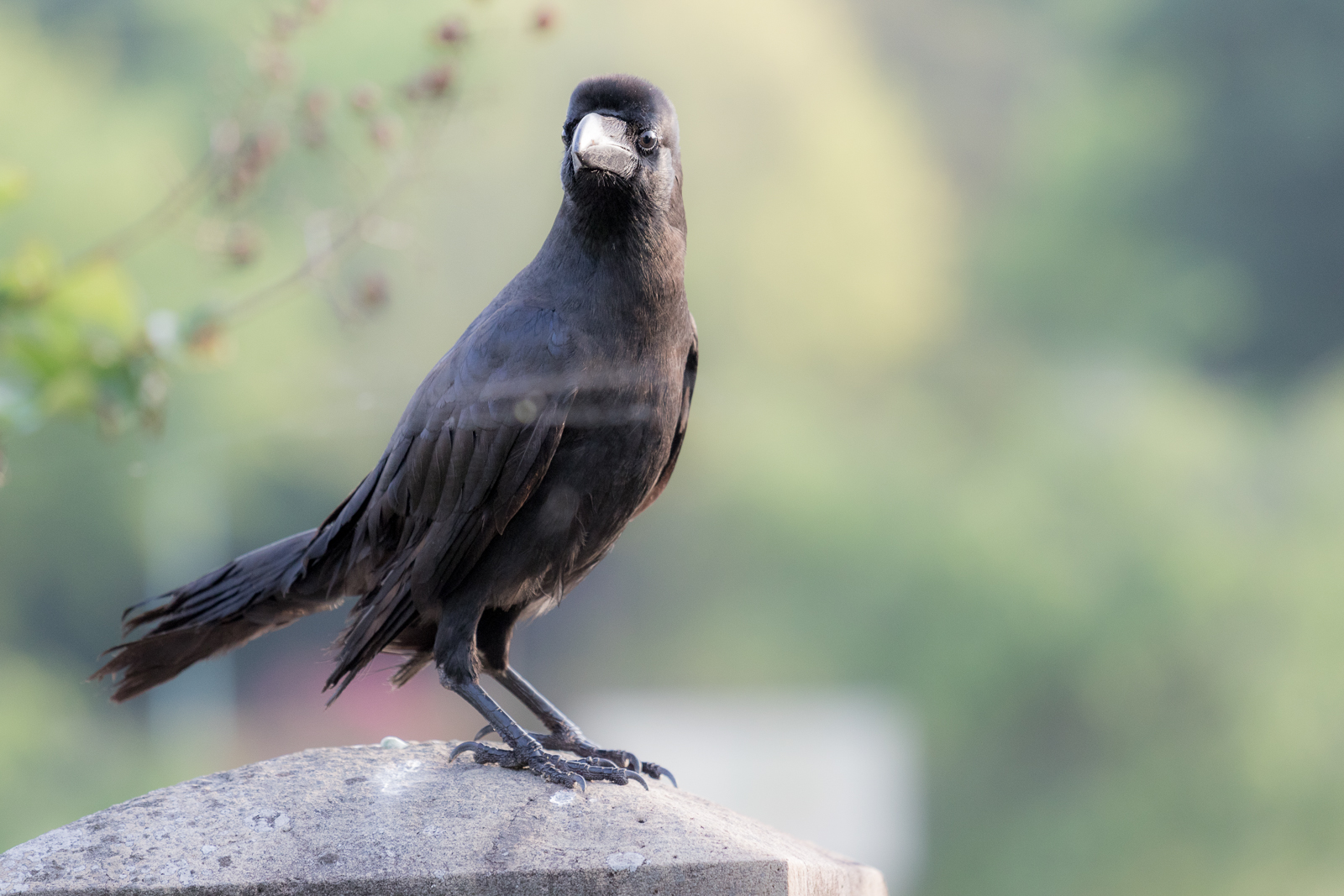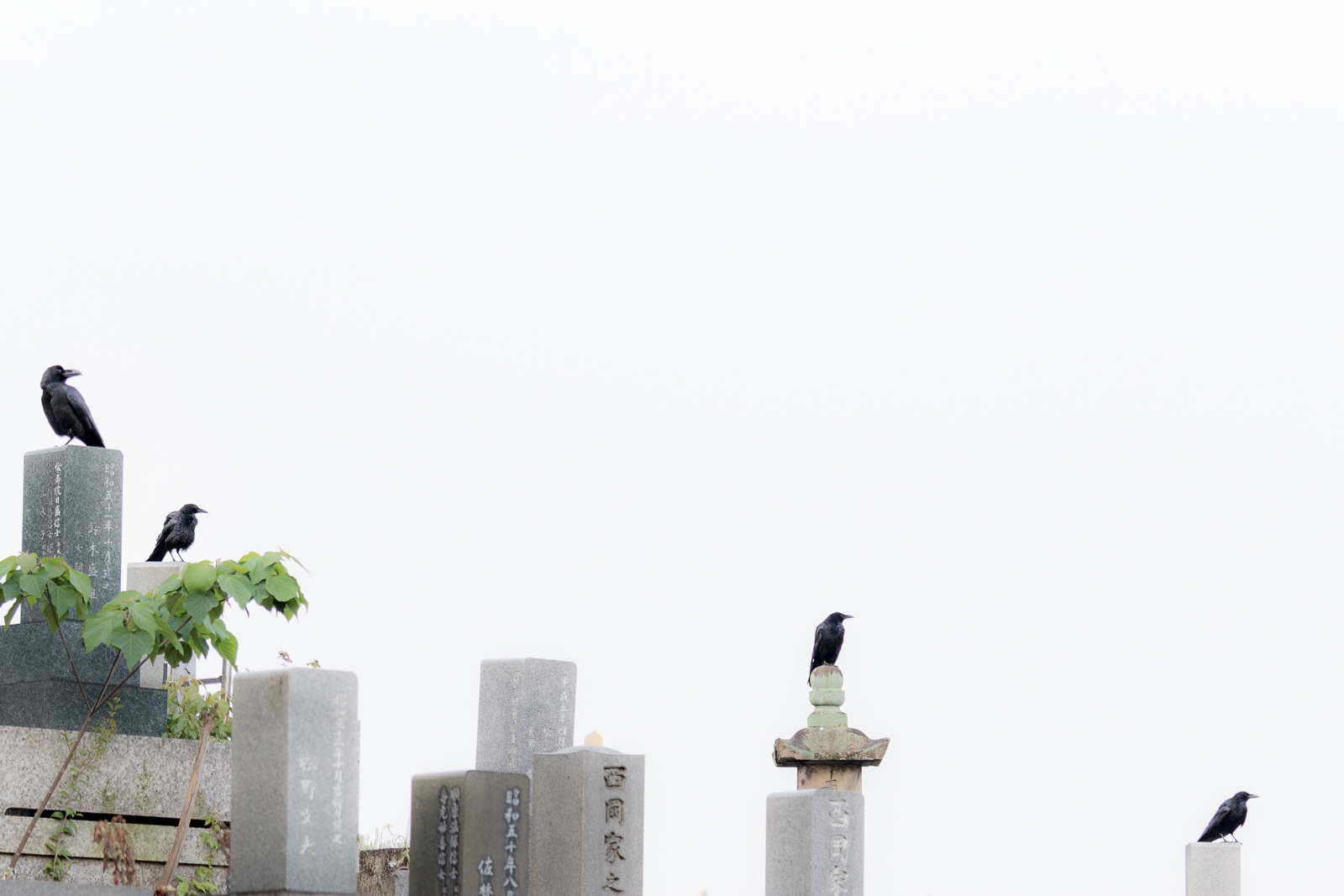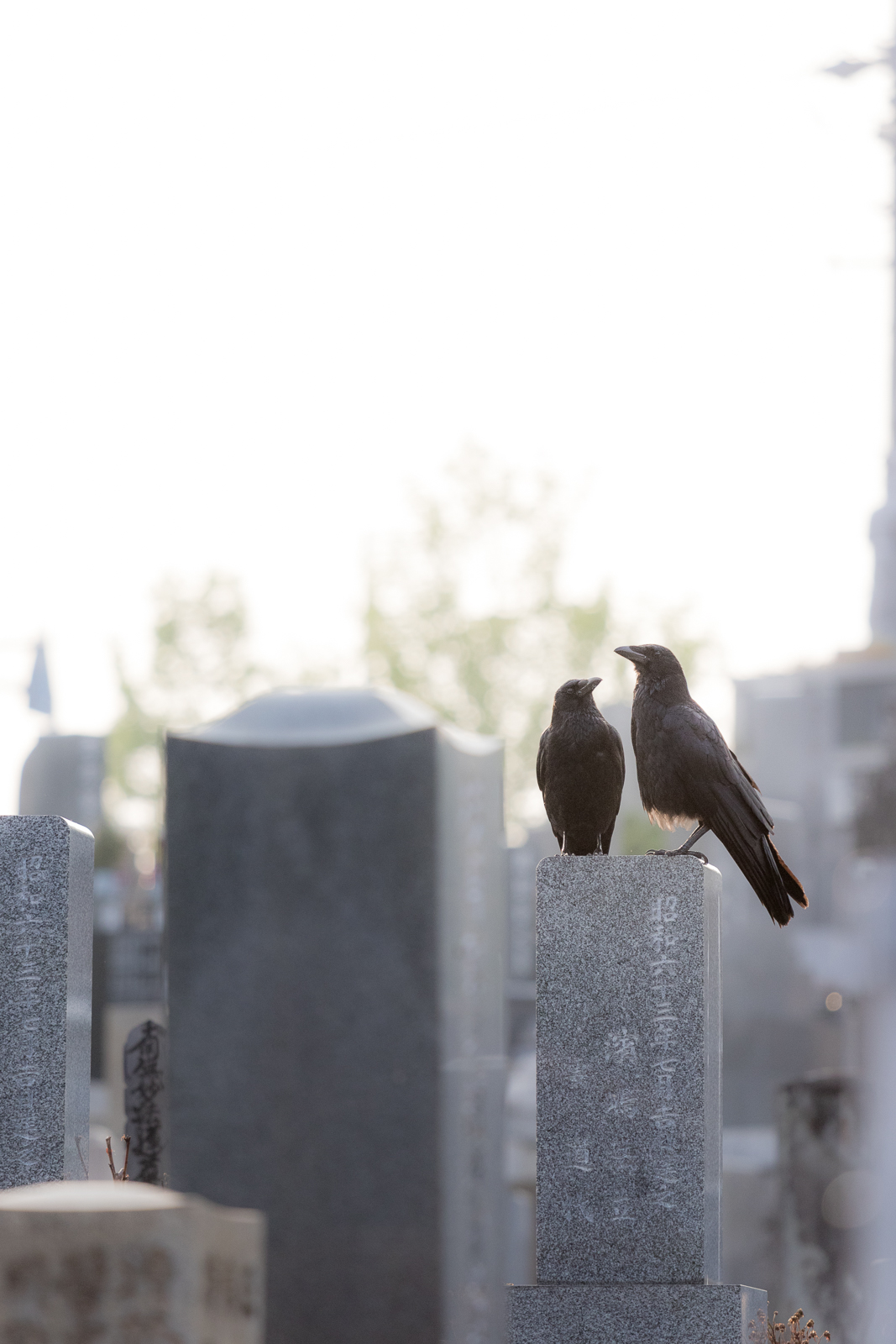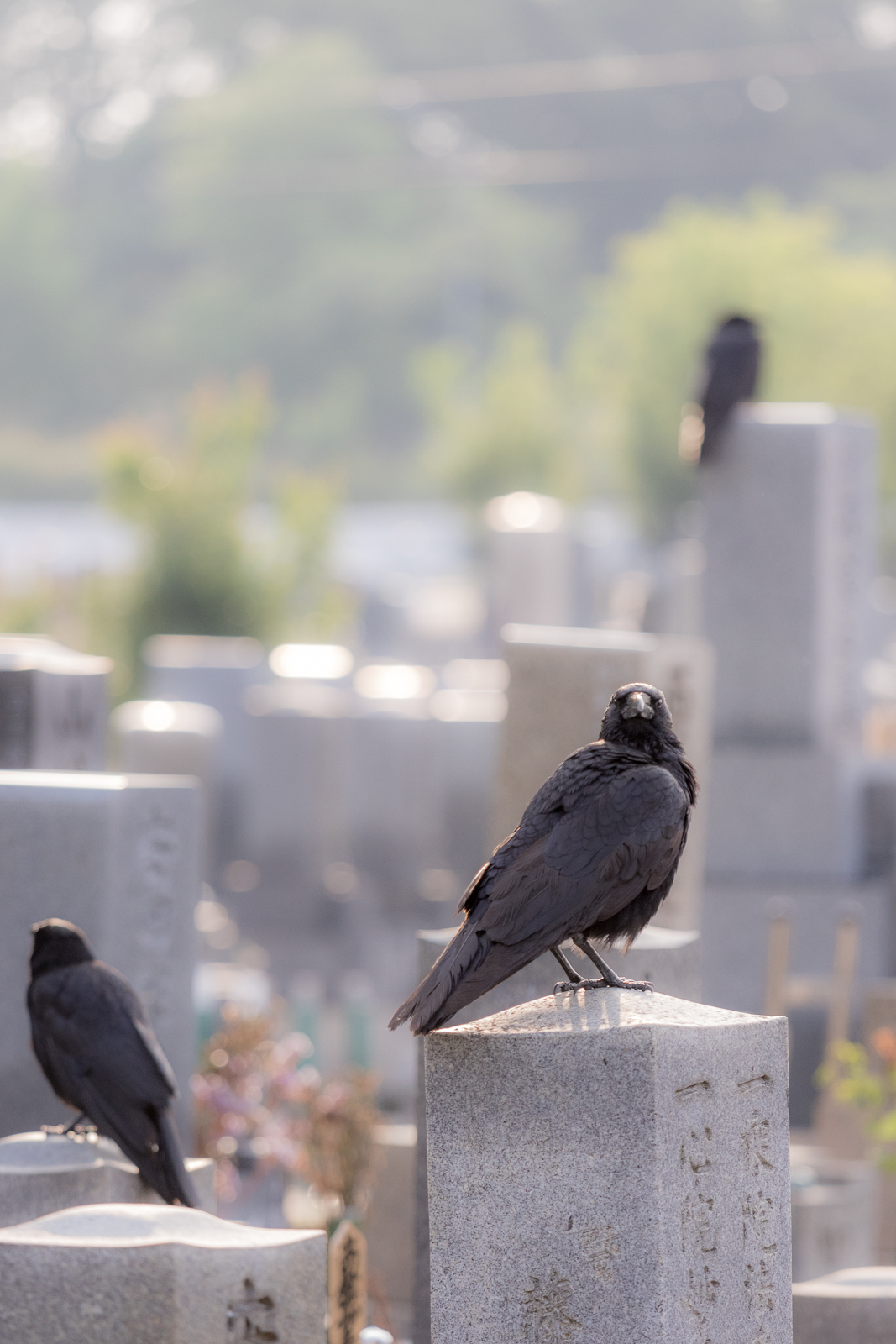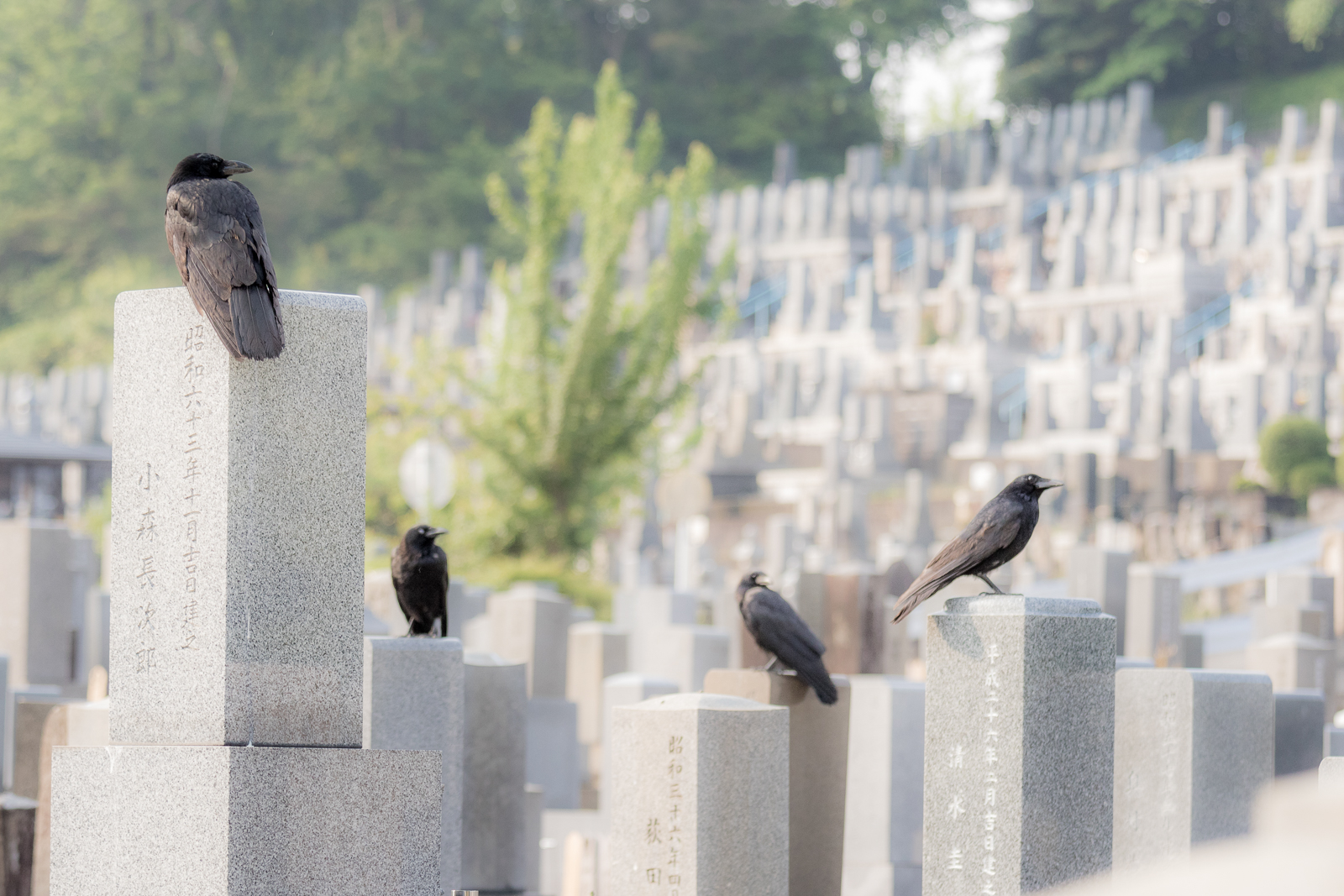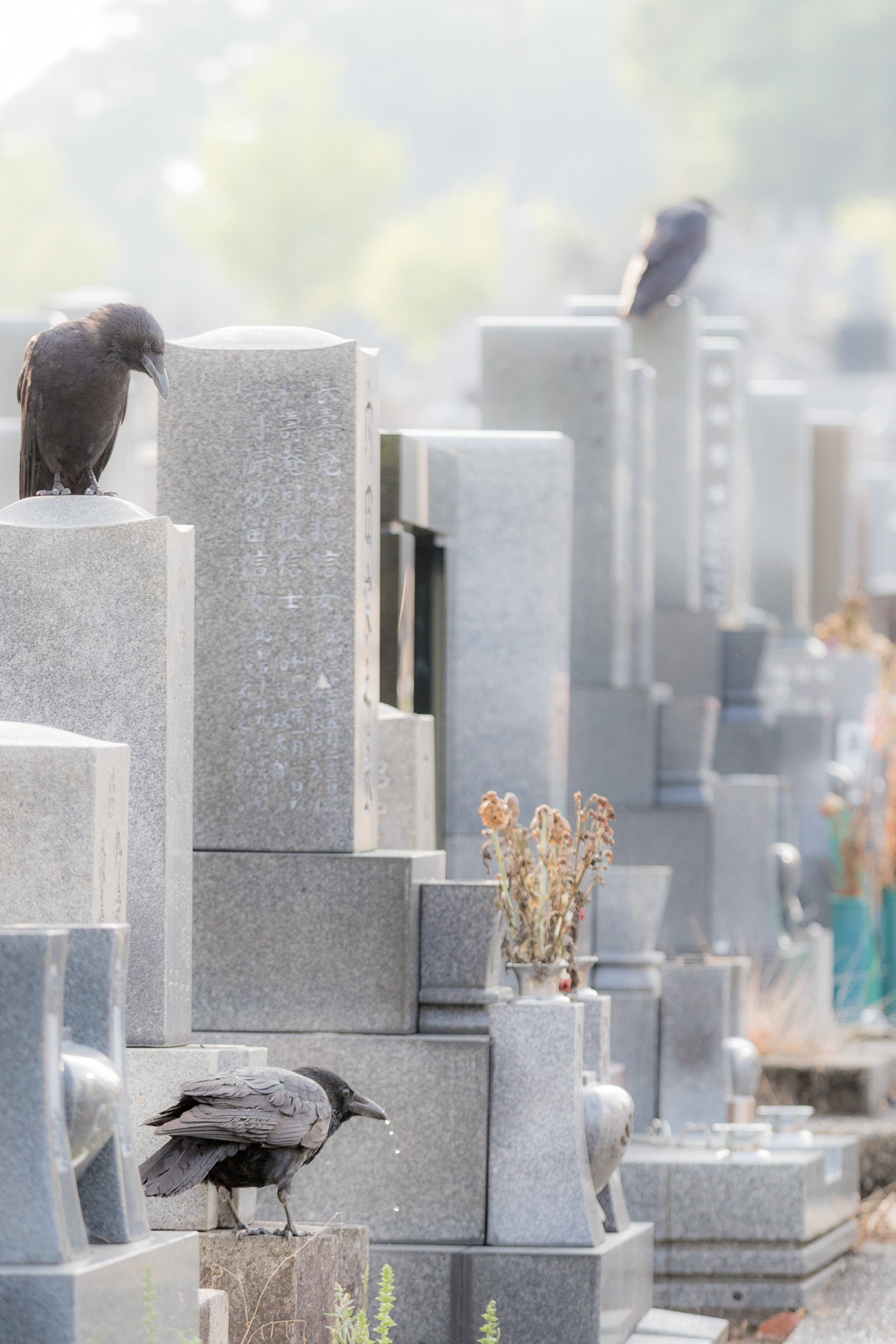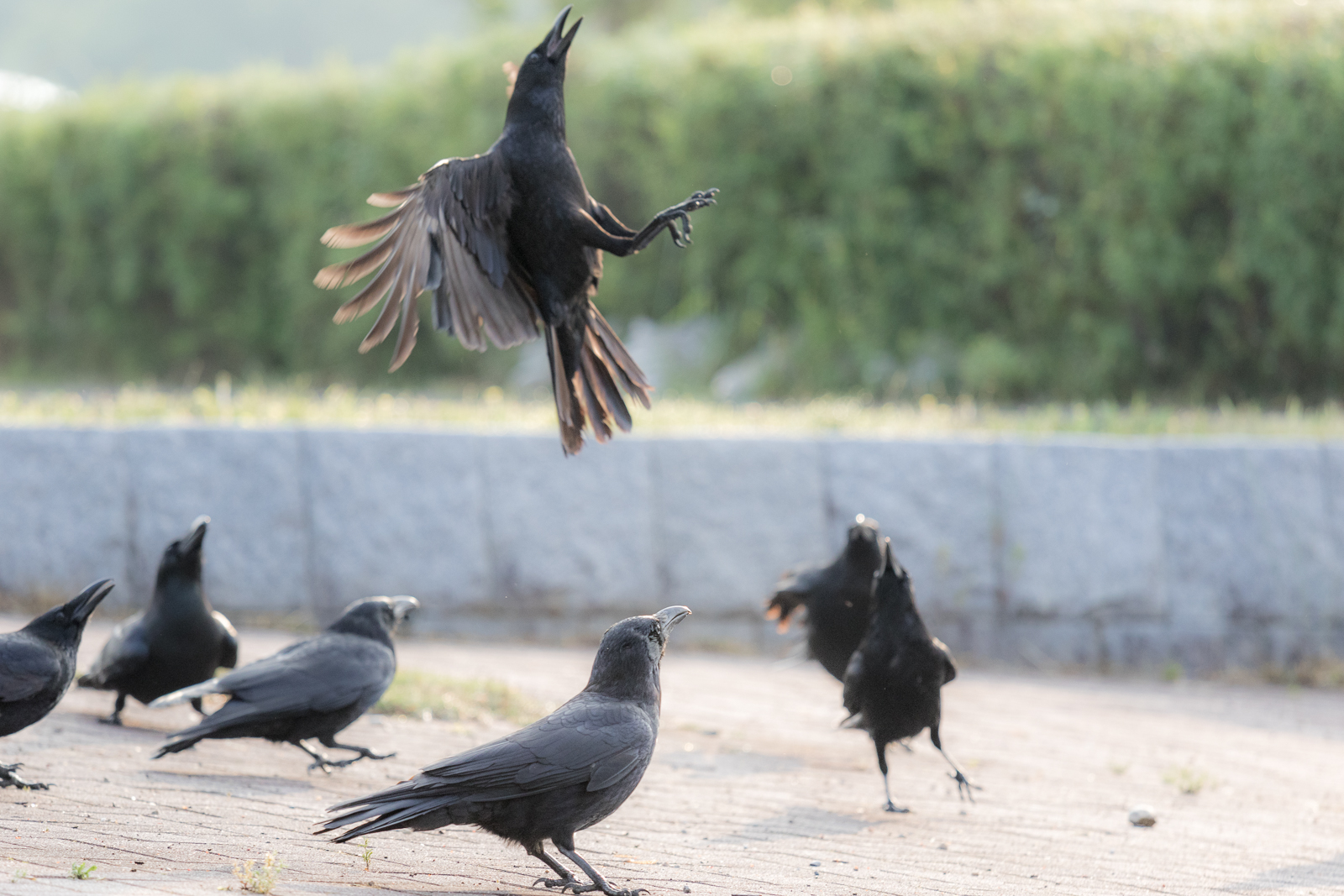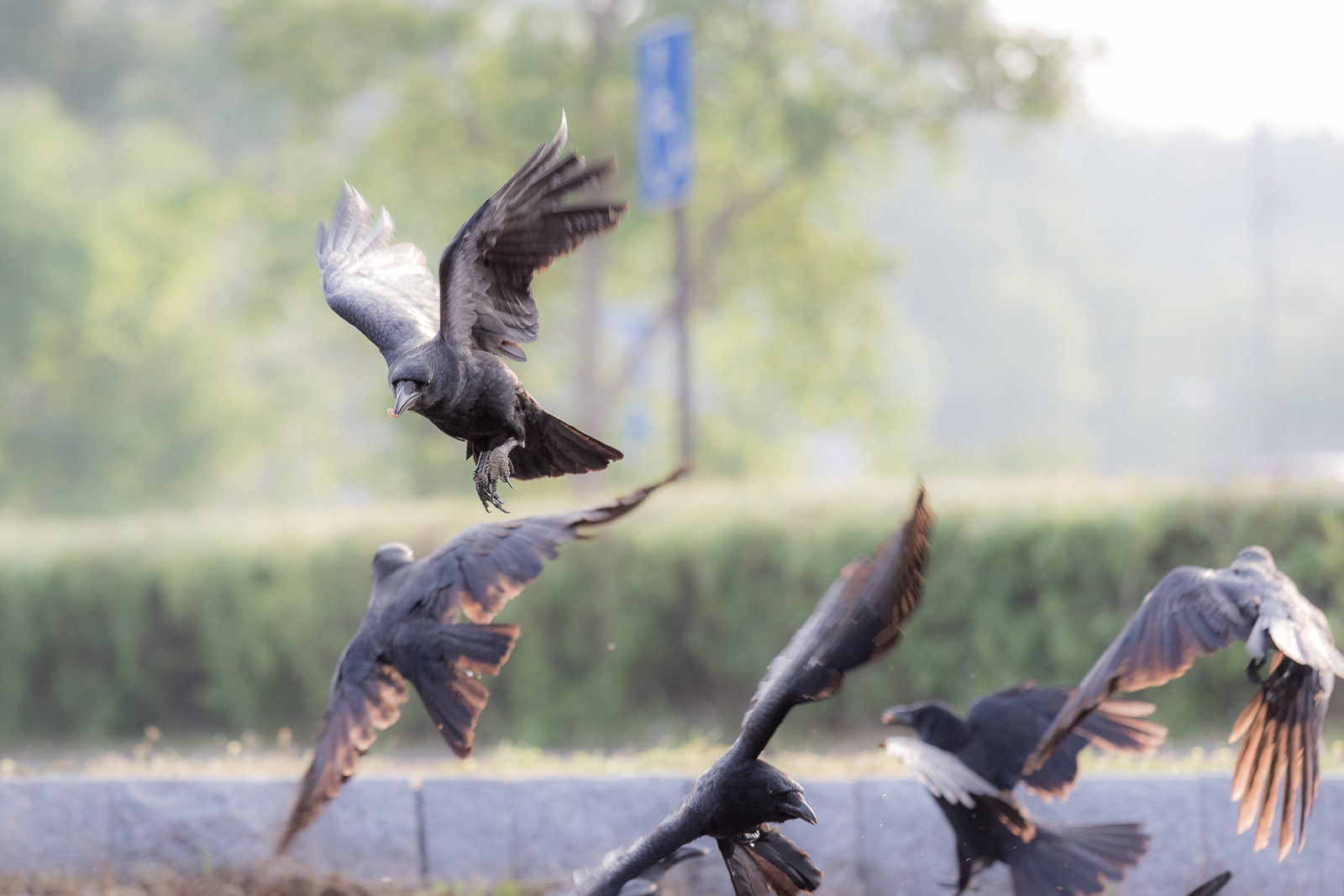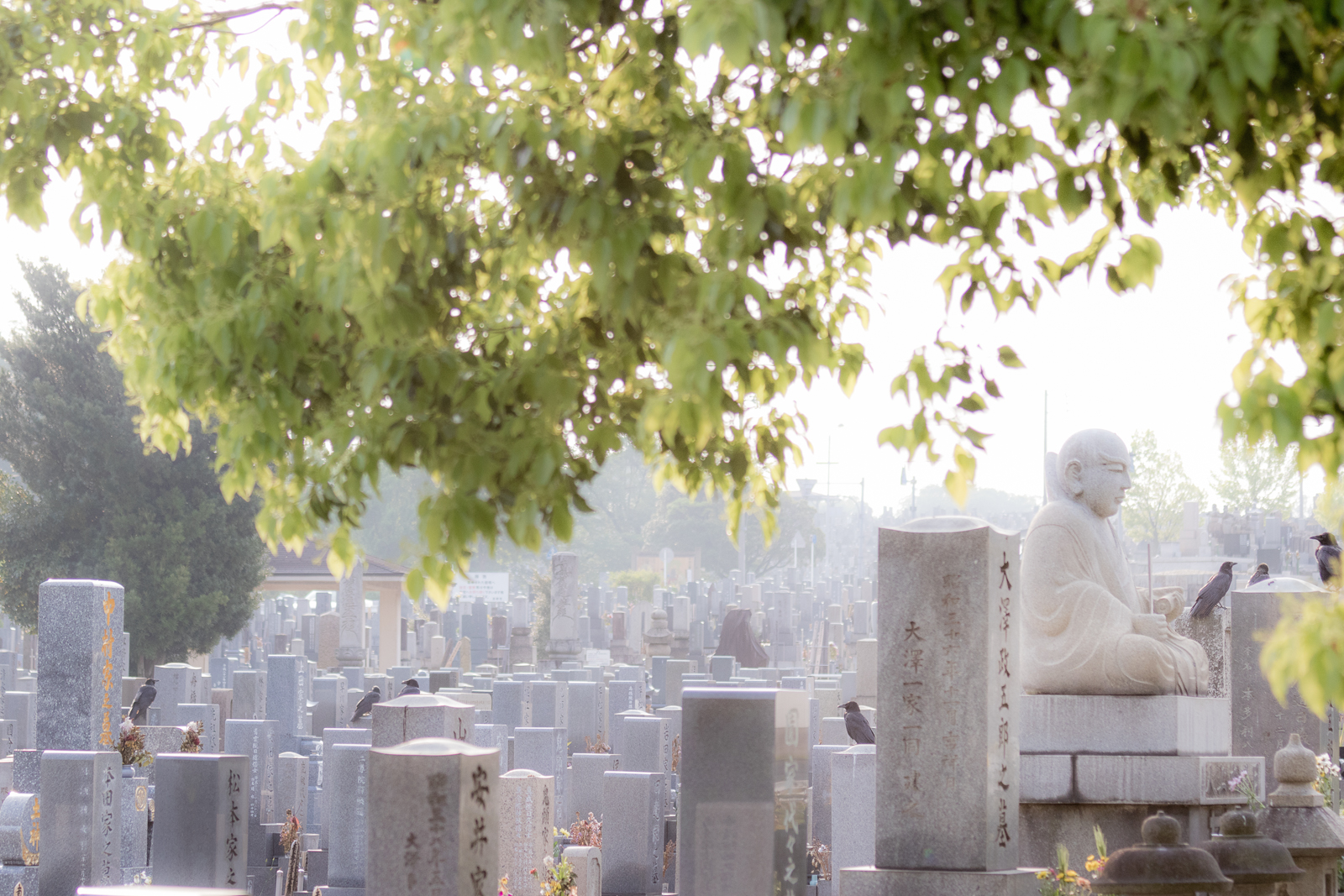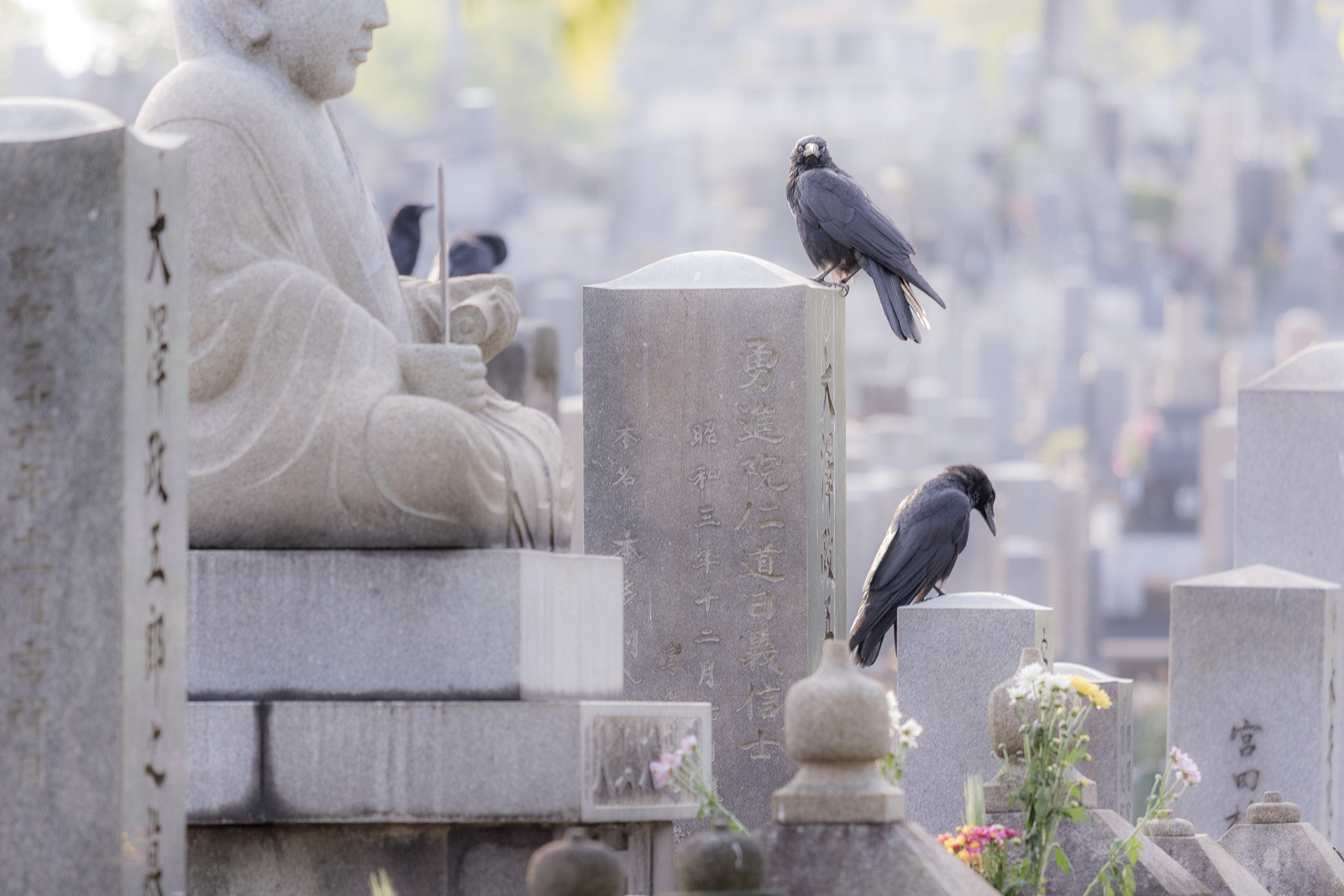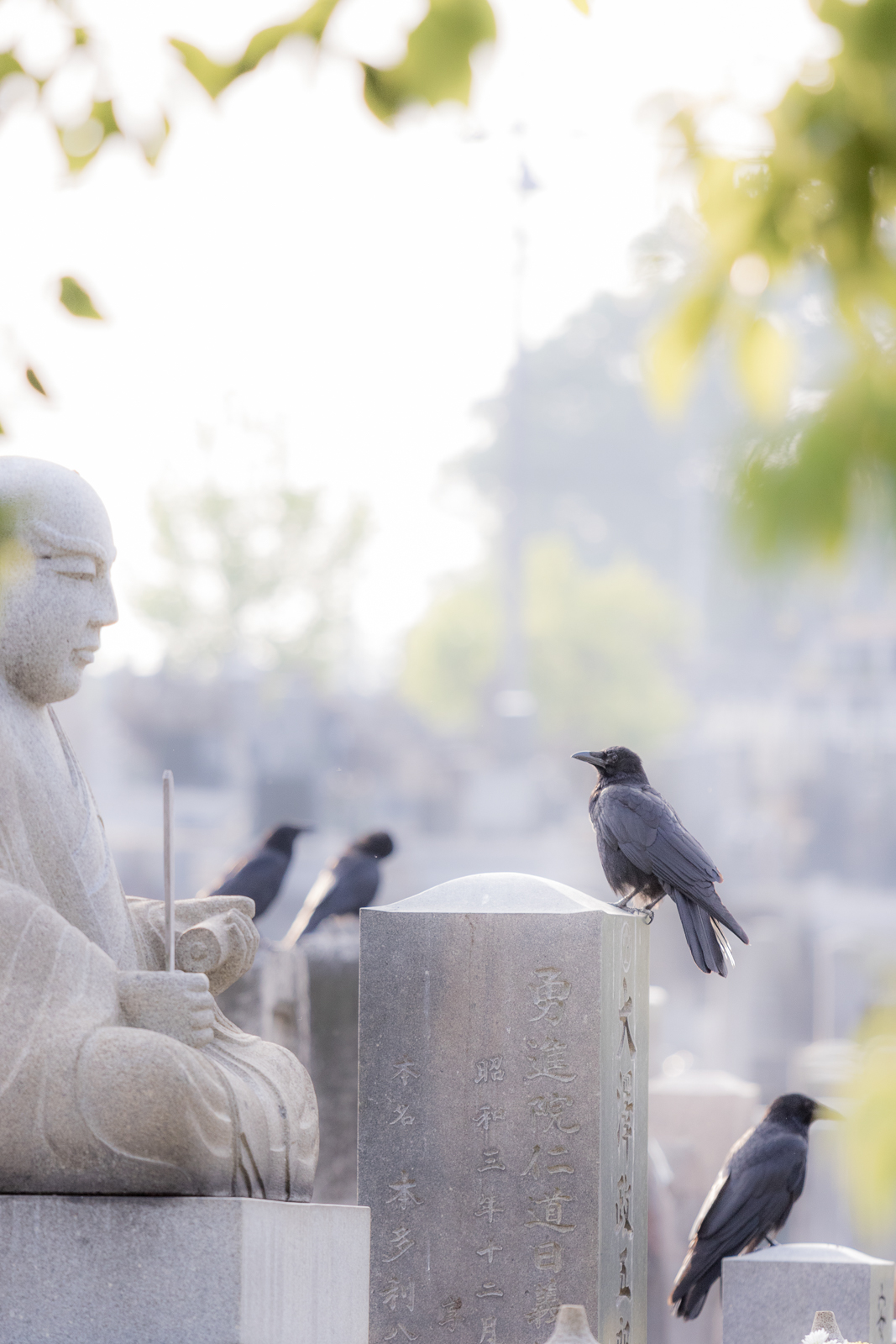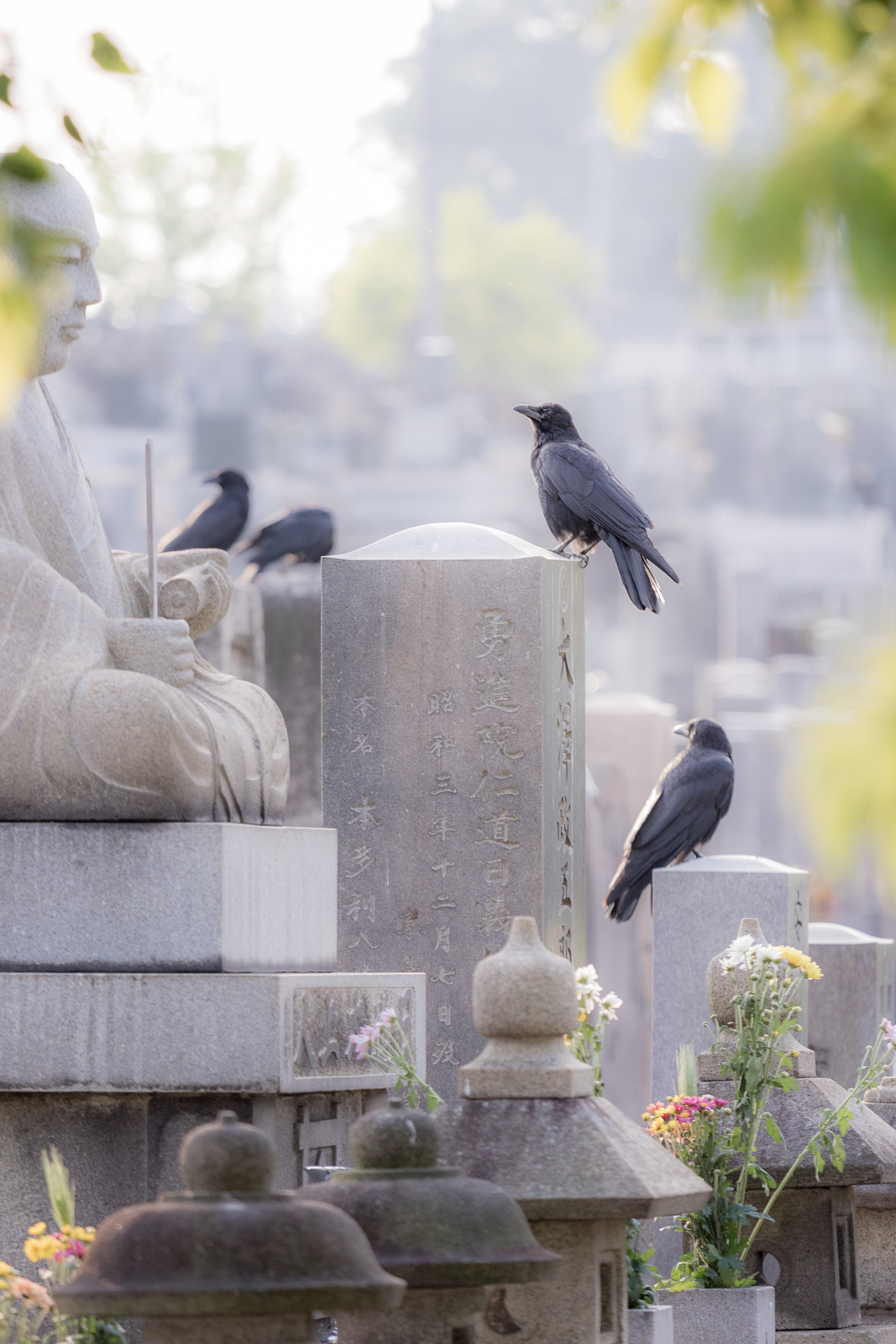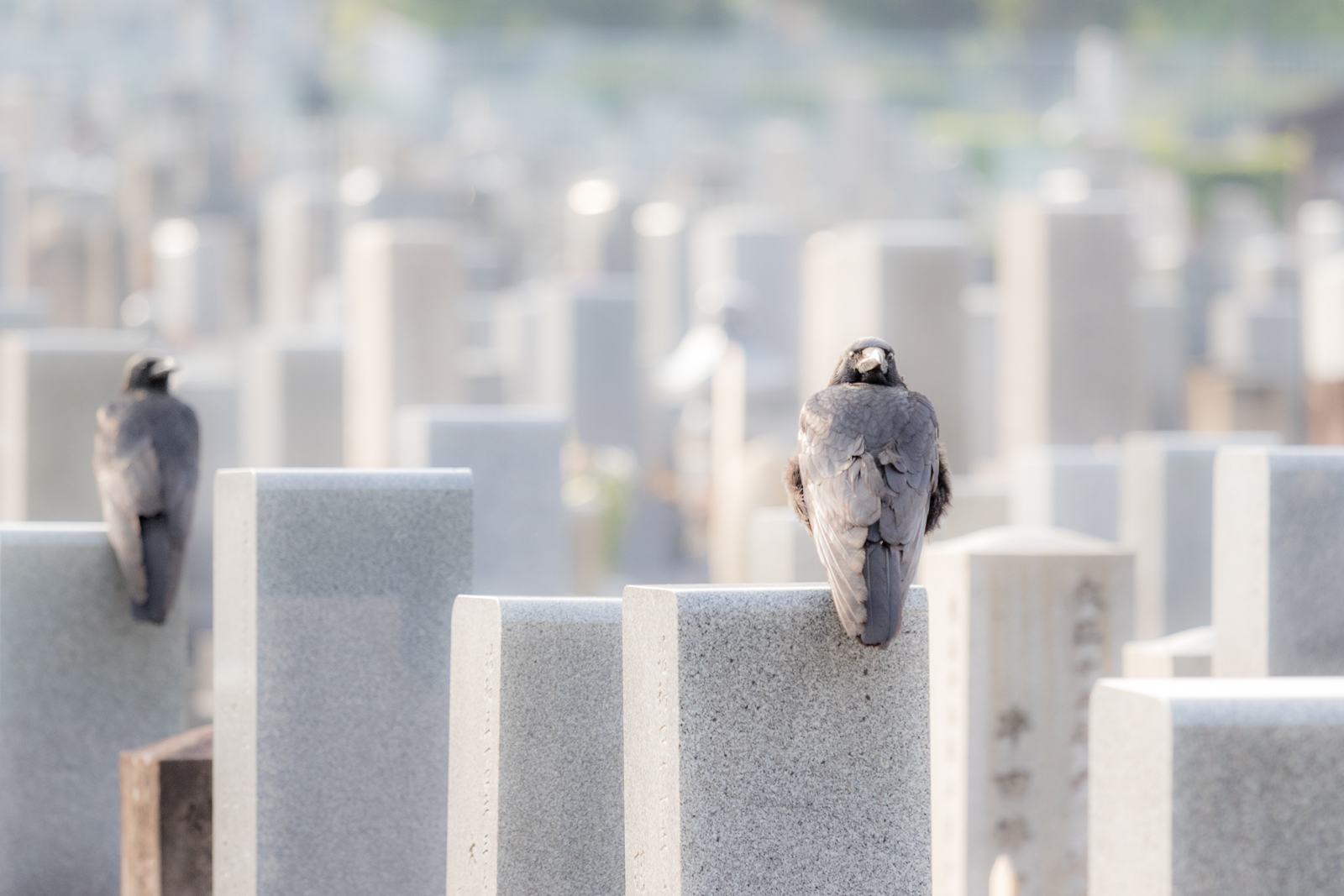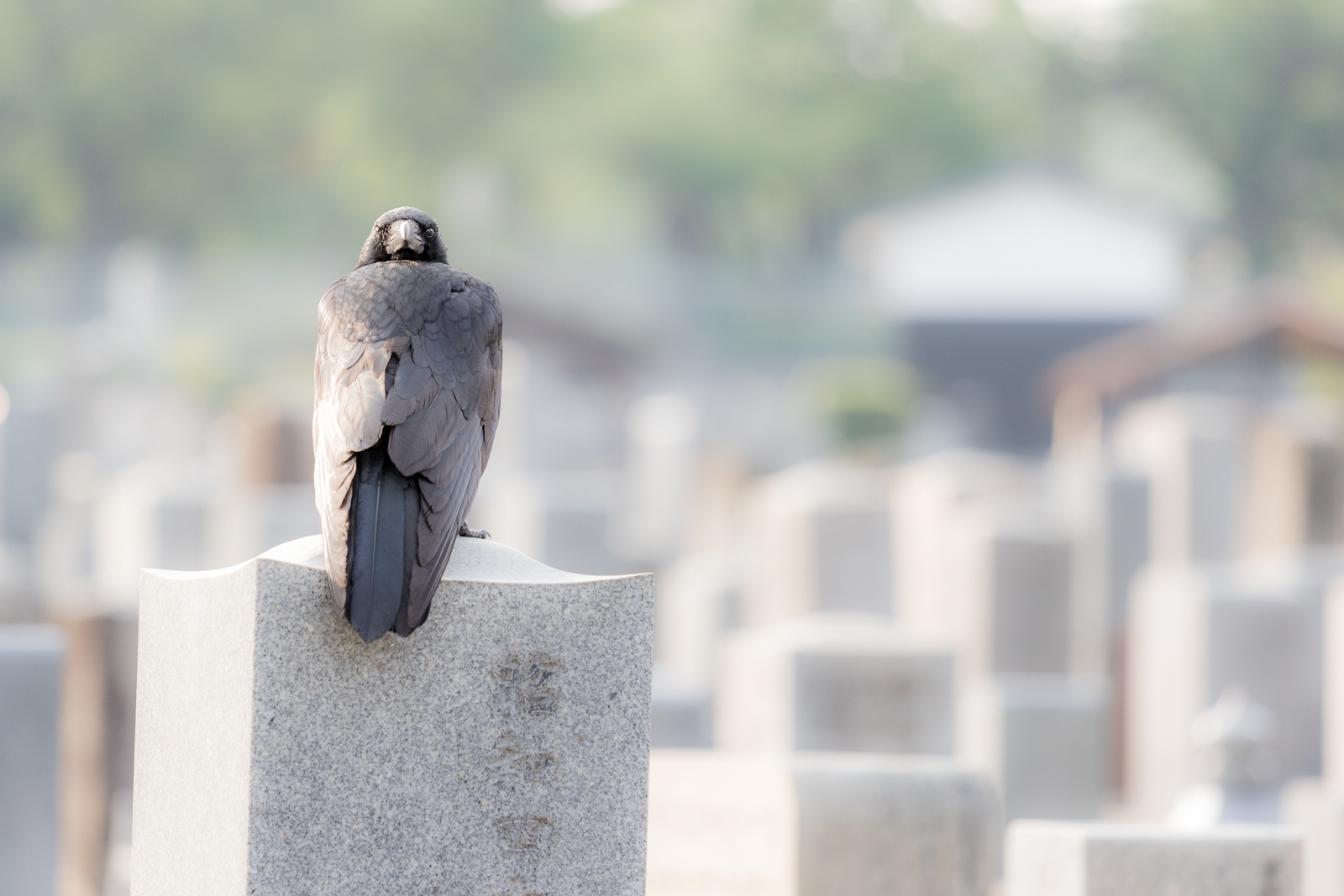Once again, I found myself out at Heiwa Koen in the early morning on a school day, watching and photographing the crows before going to work.
For the past couple of years, I have tried to approach photography much as I would a sport, through discipline, study and regular practice. There are many types of photographers, and many approaches to photography. Some photographers begin as artists, and for them photography becomes a medium for expressing a vision of the world. I have never called myself an artist, and have never tried to express myself in any medium other than photography (though I did flirt with the idea of being a writer when I was in my twenties). I feel more like a blue-collar beat reporter, constantly practicing to improve my ability to document what I see. For me, photography is an acquired skill, and while I feel myself becoming progressively more competent, there is always more to learn. As long as I feel like I'm improving, I am content. But, when I'm not producing, I feel stagnant, so, I try to exercise my shutter weekly, even if it means having to frequent the same locations. One way to maintain interest when frequenting the same place is to set different goals for each shoot, like to limit yourself to a particular lens, or a particular time of day. Recently, I have been striving to be more purposeful about what I include (and don't include) in the frame, and a cemetery full of crows is as good a location as any to practice. On this morning, I had my long lens, so I was looking at tight crops, trying to get the iconic crow on gravestone shot, while experimenting with different backgrounds, trees or other gravestones, using a shallow depth of field so the background would not be distracting, and the names on the gravestones would not be legible.
Overall, I spent about 40 minutes in one small area of the park, waiting for the crows to acclimate to my presence. As more crows gathered, I was able to get photos of multiple crows and gravestones, again with varied backgrounds and in both portrait and landscape orientations.
After awhile, I felt I had enough of crows just sitting on gravestones, and was also looking to capture some interplay between them. Lacking the sound of their incessant cawing, it is difficult to portray their interaction photographically, but these two talkers had good body language, as the crow above scolded the crow below, who then hopped off in a huff.
At one point, all the crows suddenly took flight. I followed them and found an old Japanese guy throwing out food for them. I tried to capture some of the frenzy as they competed for food. The chaos did not give me much time to consider framing, so I just took a bunch of shots, hoping to find a couple interesting ones among the bunch when I culled the photos at home.
I was pleased with the morning (I'd had the idea of photographing crows in the graveyard for years before finally figuring out when and where to go to find them) and was getting ready to wrap it up when I saw some crows gathering near a Buddha statue. Suddenly, I had another element to add to the photos and got inspired once again. I started towards them at a slow and steady pace so as not to startle them. This turned out to be the best photo-op of the day, having that one extra layer of interest to make it stand out. It was the "decisive moment" of the morning, to borrow a phrase from street photography great Henri Cartier-Bresson, a confluence of events that occurs as a result of putting yourself in a situation and waiting for things to unfold. For the two minutes or so that the crows were gathered around the Buddha, seemingly studying it, I framed it from different angles, distances and orientations, trying to find "the strongest way of seeing" (to coin another popular phrase by photographer Edward Weston), and finally settled on the last photo in this series as my favorite.
After forty minutes or so, I tossed my camera in my backpack, hopped on my bike, and went on to school, feeling invigorated the way one does after a good workout. Finally, there was this guy, with his flexible neck.
